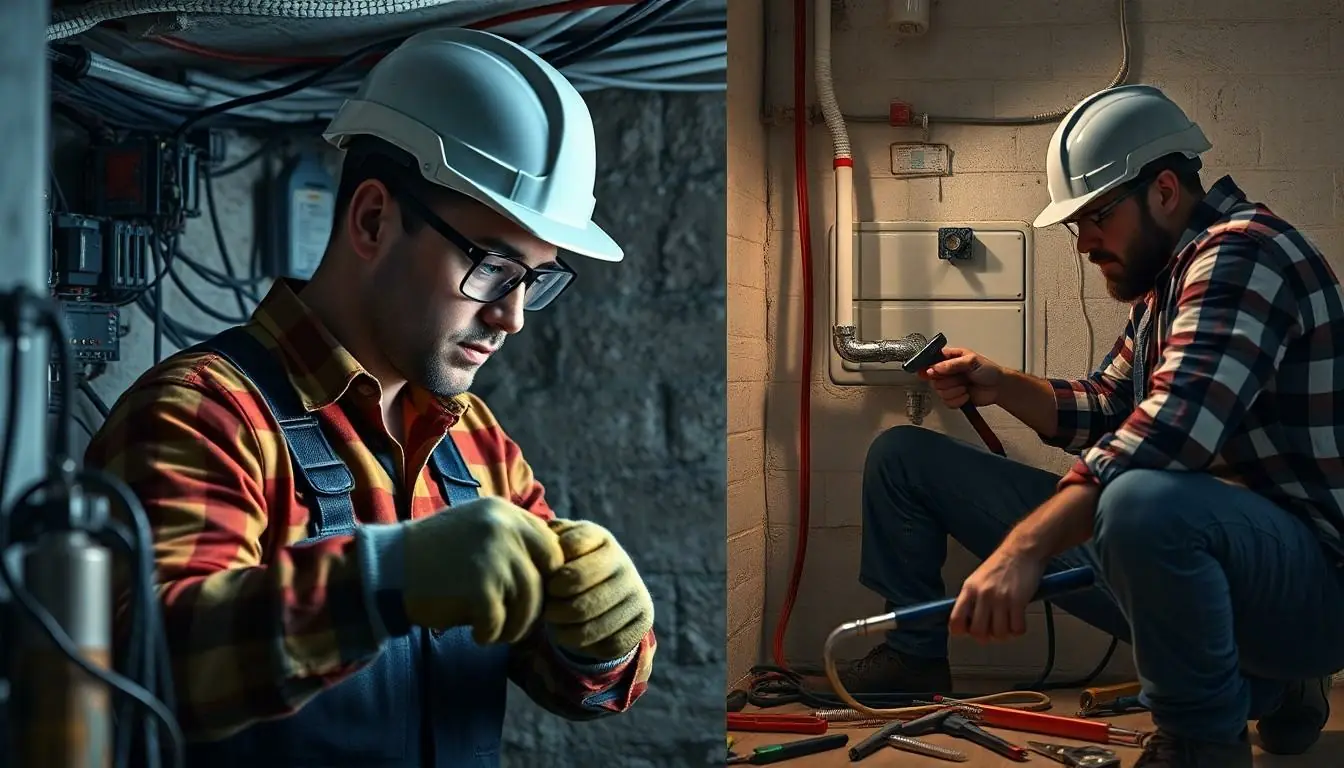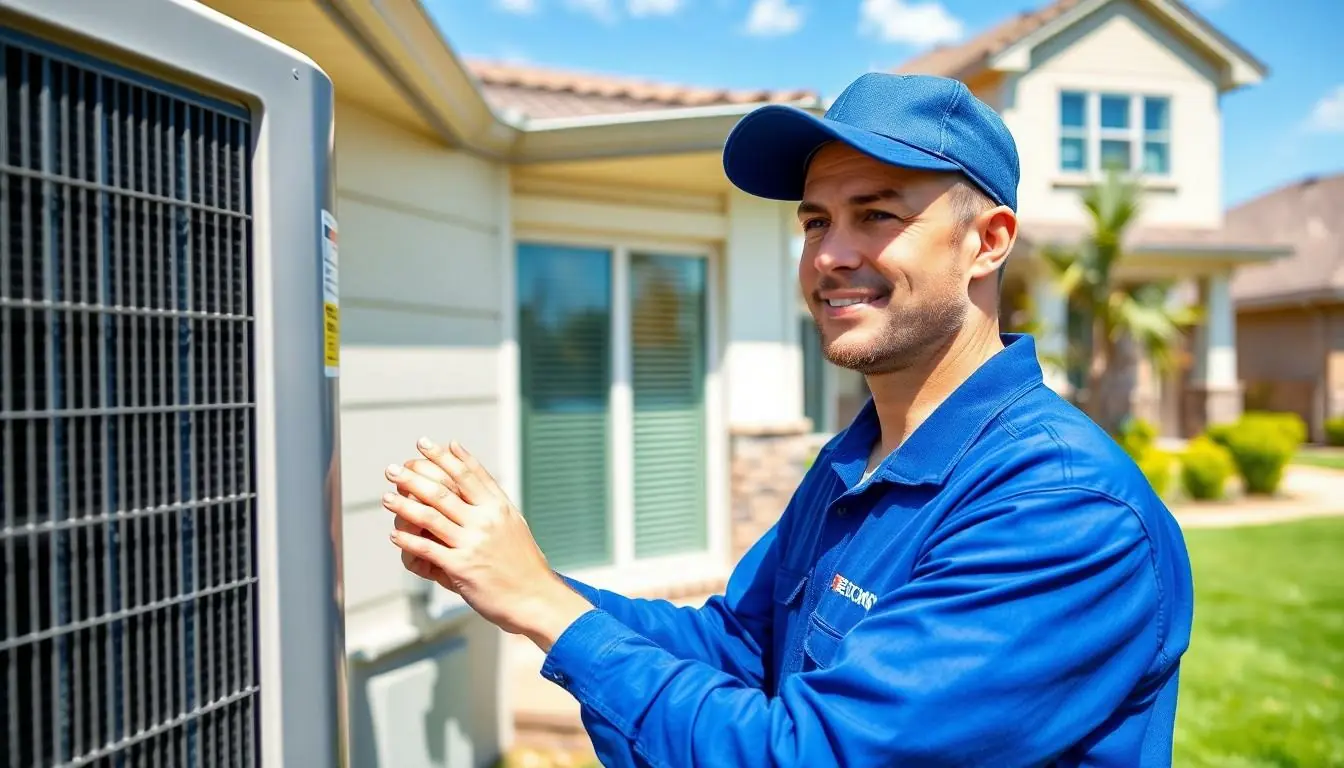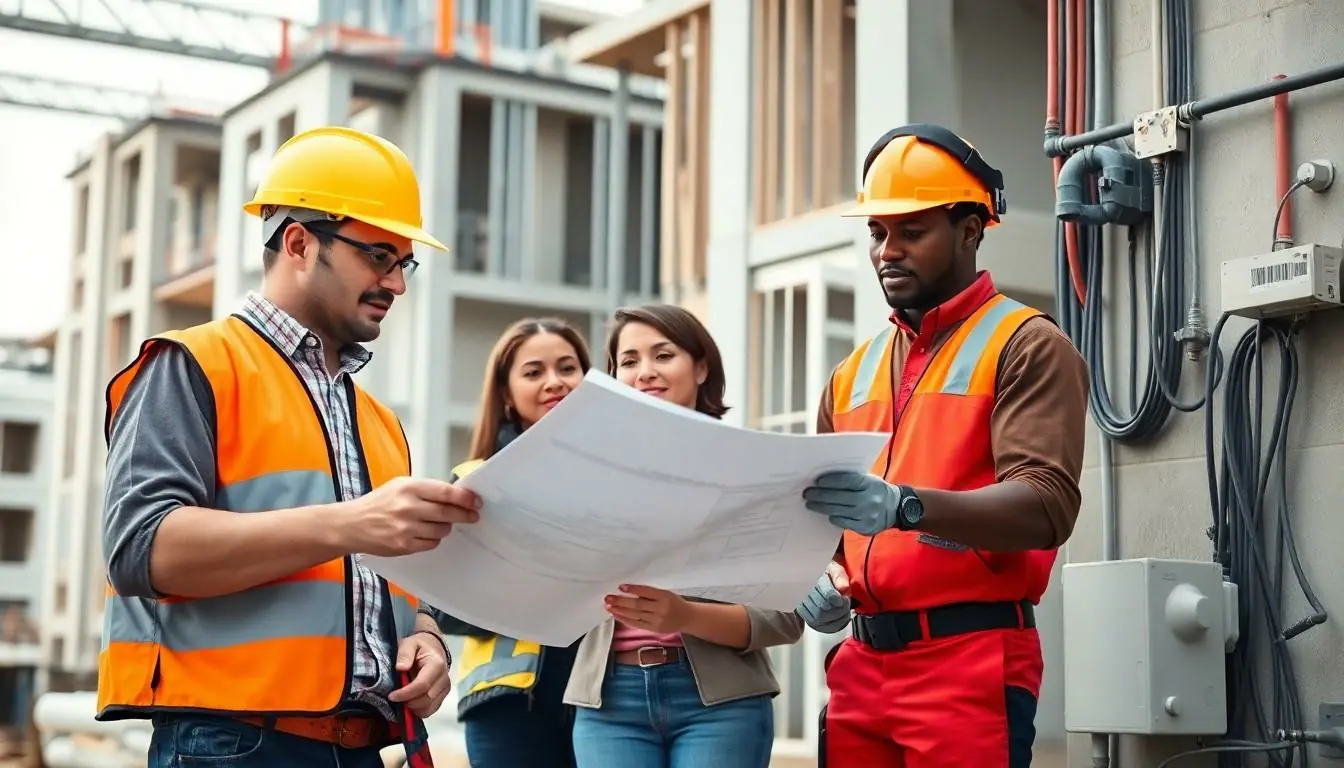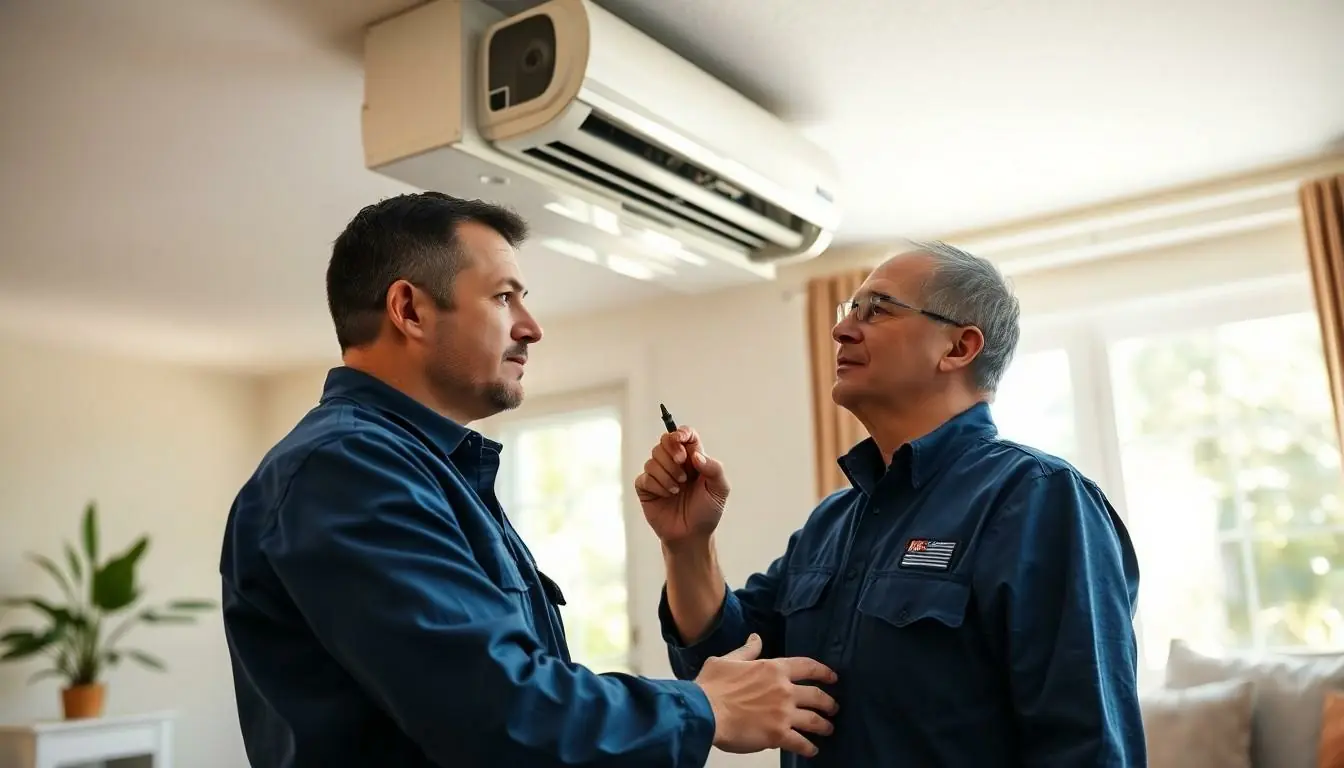When it comes to home repairs, few things inspire more dread than electrical and plumbing issues. It’s like discovering a surprise guest at a party—only this one can short-circuit your plans or flood your living room. But fear not! Understanding the basics can turn these daunting tasks into manageable challenges.
Table of Contents
ToggleOverview of Electrical and Plumbing
Electrical and plumbing systems form the backbone of any residential or commercial property. Understanding their fundamental components offers clarity and confidence when tackling repairs.
Electrical systems consist of various elements, including wiring, circuit breakers, outlets, and light fixtures. Each plays a vital role in ensuring safety and functionality. The National Fire Protection Association (NFPA) reports that improper wiring accounts for roughly 50% of electrical fires. This statistic highlights the importance of adhering to safety standards and regulations.
Moving to plumbing, it comprises pipes, fixtures, drains, and valves. Plumbing systems transport water for various purposes, from drinking to waste disposal. According to the Environmental Protection Agency (EPA), leaks can waste about 1 trillion gallons of water annually in the US. Such data emphasizes the significance of regular check-ups and timely repairs to avoid waste and maintain overall efficiency.
Homeowners should prioritize learning basic electrical and plumbing skills. Familiarity with simple tasks like changing a fuse or unclogging a drain can prevent more extensive issues from developing. Local codes dictate that certain repairs require licensed professionals, particularly when high voltage or water supply is involved. Always consider consulting experts for significant problems to ensure safe and proper solutions.
Equipped with this understanding, homeowners can approach electrical and plumbing issues with assurance. Mastering the basics empowers individuals, transforming daunting repairs into manageable tasks.
Importance of Electrical and Plumbing
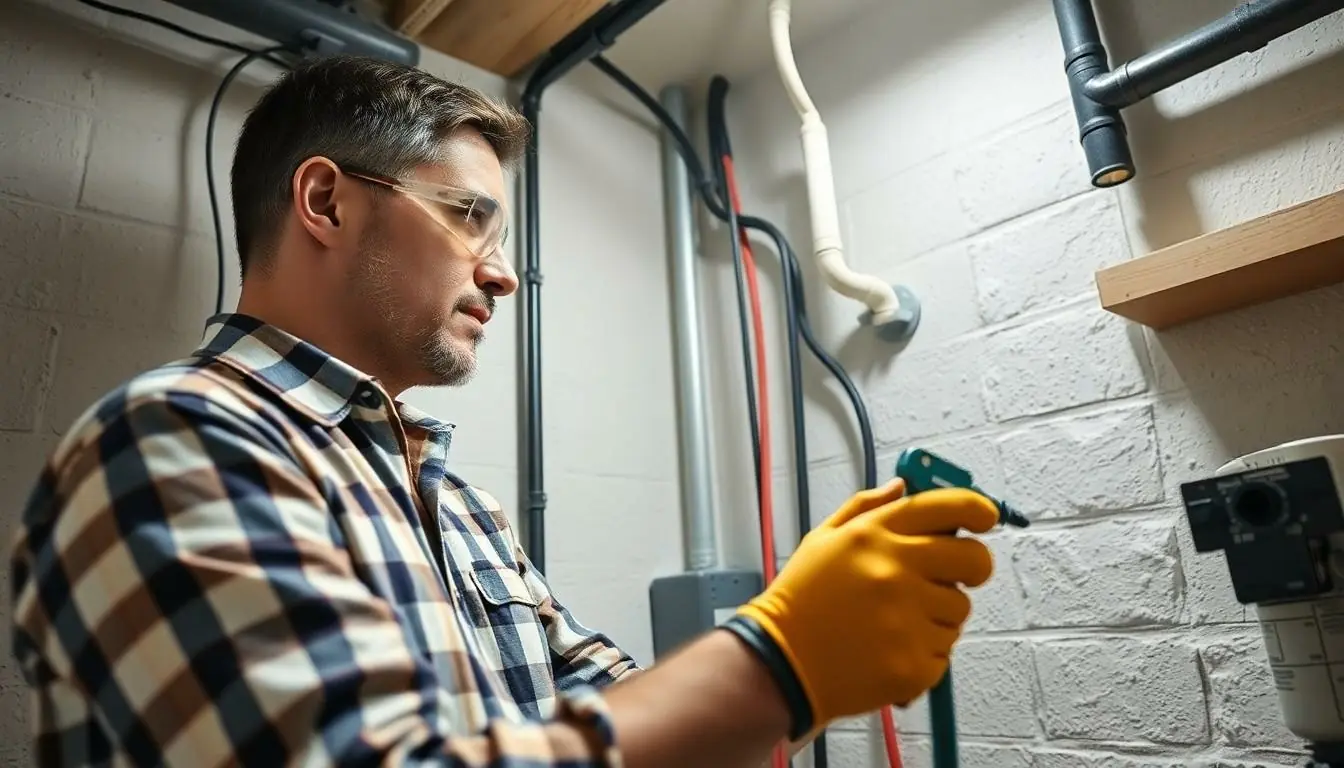
Electrical and plumbing systems serve as the backbone of any property, ensuring functional living spaces. Recognizing their significance leads to better maintenance decisions.
Safety Considerations
Safety remains paramount when dealing with electrical and plumbing repairs. Improper wiring has been linked to nearly 50% of electrical fires, a statistic highlighted by the National Fire Protection Association. Faulty plumbing can lead to significant water damage, creating hazardous conditions in the home. Homeowners must prioritize basic safety measures, such as turning off power sources before beginning electrical work or shutting off water supply during plumbing repairs. Knowing the risks associated with these systems equips individuals to prevent accidents, protecting both their property and wellbeing.
Regulatory Standards
Regulatory standards provide guidelines that ensure safety and reliability in electrical and plumbing installations. Local codes dictate specific requirements for wiring, pipe materials, and installation techniques. These standards vary by state but generally focus on maintaining safety and performance. Following regulations helps prevent costly repairs and injuries, contributing to long-lasting systems. Homeowners may reference the National Electrical Code (NEC) and local plumbing codes to understand necessary guidelines. Ensuring compliance with these standards protects property value and enhances safety for occupants.
Common Electrical Issues
Electrical systems face various common issues that can affect functionality and safety. Homeowners should understand these problems to address them effectively.
Wiring Problems
Wiring problems often arise from outdated components or improper installations. About 50% of electrical fires result from unsafe wiring practices, according to the NFPA. Signs of faulty wiring include flickering lights, frequently tripped breakers, and outlet issues. Homeowners must investigate these symptoms promptly. Using a licensed electrician ensures compliance with safety codes while identifying underlying problems.
Circuit Breaker Issues
Circuit breaker issues can disrupt electrical flow and may indicate deeper problems within the system. Tripped breakers signal that too much current is flowing, often due to overloaded circuits. Frequent tripping denotes potential issues with devices or the wiring itself. Homeowners should distribute electrical loads evenly to prevent recurring trips. When circuit breaks continue, consulting a professional is essential to resolve safety concerns efficiently.
Common Plumbing Problems
Homeowners often encounter plumbing issues that disrupt daily routines. Recognizing these common problems can facilitate timely resolution.
Leaky Pipes
Leaky pipes represent a significant concern, potentially causing substantial water damage. According to the EPA, leaks waste around 1 trillion gallons of water annually in the US. Signs of leaks include water stains on walls or ceilings, mold growth, and unusually high water bills. Addressing these leaks early can prevent extensive repairs and save on utility costs. Inspecting pipes regularly for corrosion or wear helps in identifying vulnerabilities. When leaks become difficult to locate or fix, consulting a licensed plumber is advisable for effective solutions. Unattended leaks may lead to structural damage and mold problems, necessitating prompt attention.
Clogged Drains
Clogged drains rank among the most frequent plumbing complaints. They can result from an accumulation of hair, grease, and debris over time. Homeowners may notice slow drainage or unpleasant odors as indicators. Using a plunger can often resolve minor clogs, while a drain snake may assist with deeper blockages. Regularly flushing drains with hot water can help prevent buildup. However, for persistent clogs, a professional plumber ensures thorough cleaning and unwanted damage from DIY methods is avoided. Addressing clogs promptly maintains plumbing functionality and prevents further complications.
Comparing Electrical and Plumbing Services
Electrical and plumbing services function as essential components in residential and commercial spaces. Electrical systems cover wiring, circuit breakers, outlets, and light fixtures, while plumbing systems encompass pipes, fixtures, drains, and valves. Understanding the differences between these two services helps homeowners make informed decisions regarding repairs and maintenance.
Safety concerns vary significantly between electricity and water. Electrical work poses risks such as shocks and fires, with improper wiring accounting for nearly 50% of electrical fires, per the National Fire Protection Association. Plumbing issues, on the other hand, often lead to water damage and mold growth, making swift repairs vital. Homeowners must recognize when to seek help from licensed professionals in each field.
Timeliness in addressing problems is crucial. With electrical issues like flickering lights or tripped breakers, prompt investigation prevents escalation. These issues can indicate outdated components or overloaded circuits. Recognizing these signs aids in determining whether to contact an electrician.
Similarly, plumbing problems require immediate attention. Leaky pipes or slow drains signal underlying problems that, if ignored, can result in costly repairs. Early detection mitigates potential damage, protecting property and finances.
Regulatory compliance is another consideration. Local codes, including the National Electrical Code, guide safe and effective installation. Homeowners should familiarize themselves with these codes to ensure work meets required standards.
Electrical and plumbing services play distinct yet interrelated roles. Both areas demand attention and understanding, empowering homeowners to tackle challenges efficiently. By recognizing the importance of safety, timeliness, and compliance, homeowners can ensure their systems function effectively.
Navigating electrical and plumbing issues doesn’t have to be a daunting task. By arming themselves with basic knowledge and skills, homeowners can tackle many common problems with confidence. Understanding the significance of safety and regulatory compliance can make a world of difference in ensuring a secure living environment.
Timely intervention is key to preventing minor issues from escalating into major headaches. Whether it’s a flickering light or a leaky pipe, addressing these concerns promptly can save both time and money. With the right approach, homeowners can transform these challenges into manageable tasks, enhancing the safety and value of their properties.

